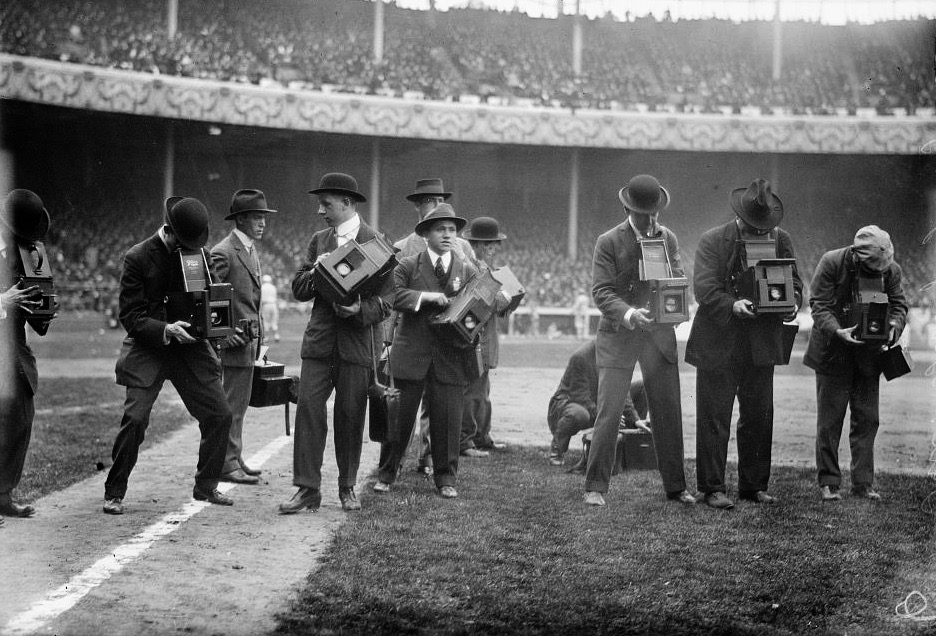

Erected in early 1919, the Victory Arch over 5th Avenue and 24th Street was designed by Thomas Hastings (1860-1929) of the New York-based firm Carrere & Hastings. Among its structures still with us today are the Henry Clay Frick House, the Standard Oil Building and, of course, the main branch of the New York Public Library. In the April 1919 release of Architecture: The Professional Architectural Monthly, Hastings said this of his latest creation:
The arch is only a temporary Victory Arch. It was constructed in collaboration with the 24 sculptors under the direction of a distinguished company of citizens and [Special Deputy Police Commissioner] Rodman Wanamaker for the purpose of welcoming home our soldiers and sailors from overseas.
With thousands of enlisted New Yorkers returning home after World War I, the city honored them with magnificent parades that passed under the new Arch. The first of these kicked off on March 25, 1919 with some 900 officers and 21,000 men of 27th Infantry Division marching up 5th Avenue. A crowd of over a million strong was in attendance. As the New York Times reported the following day, commanding officer Major General John F. O’Ryan couldn’t believe the reception:
It is wonderful! Of course, it is the 27th Division, New York’s Own, and we expected a friendly greeting, but nothing like this–it is the greatest thing I have ever seen!
But a month later, on April 28, 1919, perhaps the city’s most famous heroes hit the 5th Avenue stage: the 69th Infantry Regiment, part of the New York Army National Guard. Although it had recently been renumbered as the “165th Infantry Regiment,” most people still recognized it as the 69th, or referred to it as “The Fighting Irish” because of its largely Irish composition. But what really made it special was its lineage. The 69th descended from a regiment that formed in 1775 and fought in the Revolutionary War. It also took part in the battles of Gettysburg, Antietam, and Manassas during the Civil War. Moreover, despite being a regiment in the Union Army, Confederate General Robert E. Lee allegedly deferred to it as “The Fighting 69” because of its fearlessness.
Looking south on 5th Avenue between 24th and 25th Streets, photographer Paul Thompson captured the beloved regiment as it started to pass under the Victory Arch in the shot above. Led by commanding officer Colonel William J. Donovan, the 69th began its march at the north end of Washington Square Park. Less than two hours later, it arrived at the parade’s terminus at 5th Avenue and 115th Street. From the Times on April 29, 1919:
So fast did the regiment march that it took hardly more than ten minutes for it to pass the official reviewing stand at 82nd Street or any other given point, and block by block the crowds cheered almost throughout the entire time the veterans were marching by.
The 69th had just returned from France after 18 months of combat, but that didn’t slow the regiment’s over 2,700 active troops and 700 wounded men from making the march. And the people sure loved them for it. The Times recounted that
The crowds abandoned their usual custom of throwing cigarettes and fruit to the soldiers, and instead threw flowers upon the ranks. The men caught them and tucked them away in their belts, in their blouses, carried them with the stems of their teeth, or thrust them through the pins that held their medals on their breasts.
As I tried to match up my shot of the scene with Thompson’s, I swear I saw the boys coming up at me bedazzled in flowers as they did 95 years ago.
View from 5th Avenue and West 24th Street. Looking south at the Flatiron Building.
(NOW) Photo by Rick Stachura. July 8, 2014.
(THEN) Photo by Paul Thompson. Courtesy of the U.S. National Archives. April 28, 1919.
(This story was originally posted to my old Tumblr site on July 14, 2014.)
